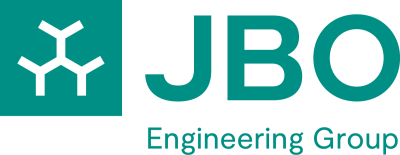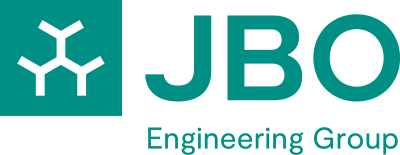Offshore Foundations: Focus Day - 26/08/2025
8:00 - 8:45
Registration and Welcome Coffee
8:45 - 9:00
Chairperson´s Opening
Walid Al Otaibi -
Director Offshore,
JBO
Walid Al Otaibi - Director Offshore, JBO Engineering Group GmbH
9:00 - 9:30
The risk of non-conventional soils on pile installation
Yiorgos Perikleous -
Principal Geotechnical Engineer,
DNV
• What are the foundation installation challenges faced by the industry (pile refusals, pile
runs, boulders, etc.)?
• Key lessons from installation in non-conventional soils: glauconitic sands, carbonate soils,
high strength glacial tills and intermediated soils.
• How well are we addressing installation risks?
9:30 - 10:00
Tackling Pile Run: Causes, Lessons Learned, and Potential Solutions for Offshore Foundation Installation
Pooyan Ghasemi -
Lead expert,
RWE
• Pile Run: Causes, predictions, and mitigation strategies
• Lessons Learned: Insights from two North Sea projects
• Vibratory Driving: Evaluating its feasibility as a solution
10:00 - 10:30
Hybrid monopile foundation concept with drilled insert piles
Thomas Krusenstjerna Albæk -
Head of Discipline - Primary Structures and Loads,
COWI A/S
• Impenetrable soil conditions underlying soft soil conditions, caused for novel design solution.
• Innovative Design: Development of hybrid monopile foundations with drilled insert piles
with a diameter of 5.5 m.
• Extensive simulations to verify structural integrity during installation and in extreme conditions
• Material testing to extend the boundaries of grout applicability
• Certification achieved in 2023 with installation and commissioning completed in 2024
10:30 - 11:00
Refreshment Break and Networking
11:00 - 11:30
Driving of XXL Monopiles
Thijs Kamphuis -
Development Lead,
Heerema Marine Contractors
• How can XXL monopiles be driven efficiently while remaining within noise limits?
• A technical overview of available options (impulse, vibrations—axial
and torsional, push), their application areas, and associated challenges.
• Presentation of technical results from the Carbon Trust study (expected May 2025): “Gap
Analysis VLT vs Structural Integrity Design Guidance.”
11:30 - 12:00
Recent findings for 3D impact driving assessment, including:
Ömer Can Kücükylidiz -
Lead Engineer,
Wood Thilsted
• Method for screening for critical pile driving position
• Benchmark and comparison of WEAP vs. 3D FE impact driving assessment
• Foundation design implications for using increasingly larger hammers for pile driving
12:00 - 12:30
Vibrojet®
Rob Sprij -
Lead Mechanical Engineer,
GBM Works
- What is it
- The potential of jetting
- Development in Joint Industry Projects
- Outlook
- Commercial implementation in HKW
12:30 - 13:00
Low-noise foundation installation technology developments at Ørsted
Jan Pedersen -
Senior Technology Officer - Foundations,
Orsted A/S
• Suction bucket jackets: experiences from offshore installations.
• Novel low-noise monopile installations: advances using jetting technology
• Future outlook
13:00 - 13:30
Challenges when driving is not an option?
Paul Anthony Misic -
Senior Engineer,
Statkraft
• Driving into rock is an uncertain science
• Drilling is not a straight forward challenge
• Aspects not seen before as well as opportunities
• Selection of foundation concept is not necessarily based upon functional reasoning
13:30 - 14:30
Lunch Break and Networking
14:30 - 15:00
Vibro-Installation of XL Monopiles in Offshore Wind: Prediction, Execution and Validation of Driveability, Fatigue and Noise
Rob Eijkens -
Technical Manager,
Dieseko Group BV
- Pre-Installation Analysis: Drivability and Underwater Noise Emissions
- Drivability and Underwater Noise Emissions Assessment: Pre-Installation Prediction vs In-Site Measurements.
- Monopile Fatigue In-Situ Measurement Assessment During Installation Loading
- Video Footage: Vibro-Driven Monopile Installation to Target Depth
- Lessons Learned: Correlating Critical Factors in Pile Installation
- Lessons Learned: Validation of theory and practice
15:00 - 15:30
Will the increase in WTG size (20-30MW) affect the T & I market??
Jeroen Berkhout -
Project Director,
Offshoretronic SL
• New WTG units with capacities between 20 and 30 MW, are set to debut in the market by
2029, what dimensions of Foundations should we expect.
• The advancement of larger WTG units will be propelled by significant cost reductions, but
is the supply chain ready for this shift.
• Highlighting the risks and challenges related to the T & I of larger Monopiles, which surpass
weights of 3,500 metric tons.
• Emerging markets can benefit from the lessons learned from the T & I issues and
challenges faced over the last 10 Years
15:30 - 16:00
Coffee and Refreshments
16:00 - 16:00
End of Focus Day
16:00 - 17:00
Room Zürich 2: Workshop A | Sustainability in Offshore Wind – The new standard or was it just a trend? Regulations and Industry Impact in a Nutshell
Susanne Leidescher -
Lecturer,
.
Develop an understanding of future regulatory requirements and sustainable measures in the field of offshore wind along best practice examples:
- Regulatory developments (EU taxonomy, CSRD, CSRDDD, Omnibus package)
- The future role of sustainability for offshore wind
- Social Equity strategies (multi-use, co-existing)
- Ecological measures (Nature Inclusive Design and nature positivity, circular concepts and decarbonisation options for the supply chain)
Susanne Leidescher
Lecturer.
16:00 - 17:00
Room Zürich 3: Workshop D | Decommissioning of offshore foundation piles from a geotechnical perspective
Dr.-Ing. Jan Fischer -
Senior Chief Consultant,
Ramboll
Dr.-Ing. Nils Hinzmann - Division Offshore Geotechnics, Federal Waterways Engineering and Research Institute
- Regulatory Framework in Germany: Decommissioning obligations under the WindSeeG and BSH guidelines.
- Research and Technology Development: Overview of current projects on removal techniques and technology readiness levels.
- Technical challenges related to full pile removal (set-up effect, structural aging, soil model, pile fatigue, T&I constrains).
- Current practice and industry experience: e.g. cutting, partial removal, full removal

Dr.-Ing. Nils Hinzmann
Division Offshore GeotechnicsFederal Waterways Engineering and Research Institute

17:10 - 18:10
Room Zürich 3: Workshop B | Monopile Stiffness, Damping & Modelling
Yiorgos Perikleous -
Principal Geotechnical Engineer,
DNV
- Case study Seismic Design – Insight and results from ACE 2 JIP
- Developments of detailed geotechnical modelling
- Interfaces and challenges with WTG design process































